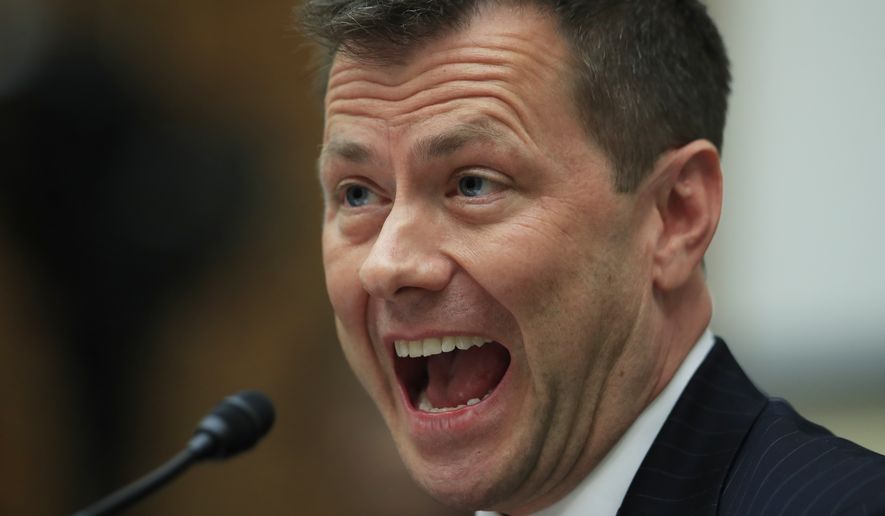
The lengths to which the FBI[1] relied on the Hillary Clinton opposition research dossier to investigate her political rival came into sharper focus with the testimony of the lead investigator, FBI[2] agent Peter Strzok.
Mr. Strzok told a joint House committee last week that the FBI[3] received from Associate Attorney General Bruce Ohr[4] a raft of documents — including sections of the anti-Trump[5] dossier — during the investigation into Russia[6] election interference.
The first-time disclosure is significant because it confirms an unusual and continuing channel for collusion accusations that started outside the government with anti-Trump[7] people and reached Mr. Ohr[8] at the Justice Department[9] and then the FBI[10].
Around that time, Mr. Ohr[11] was communicating with dossier writer Christopher Steele[12]. Mr. Ohr[13]’s wife, Nellie, a Russia[14] researcher, worked for Mr. Steele[15]’s paymaster, investigative firm Fusion GPS, which was trying to damage Republican presidential candidate Donald Trump[16]. Mr. Ohr[17] met with Fusion co-founder Glenn Simpson after the November 2016 election.
Mr. Strzok, who led the FBI[18] investigation of the Trump campaign, testified that he began receiving dossier sections in September 2016, but not from Mr. Ohr[19], and continued receiving documents into 2017. Mr. Strzok testified that he met with Mr. Ohr[20] during that time.
The arrangement suggests that the FBI[21] used the partisan, anti-Trump[22] dossier and was eager to receive its episodic chapters from June to December 2016.
None of the Russia[23]-Trump[24] collusion charges has been publicly confirmed to date. Mr. Steele[25]’s sources resided in the Kremlin.
Mr. Steele[26], a former British spy who told Mr. Ohr[27] he wanted to destroy the Trump candidacy, ultimately was paid by the Clinton campaign and the Democratic National Committee.
Mr. Strzok’s text messages at the time revealed that he despised Mr. Trump[28] and wanted, in his word, to “stop” him. He told the House Judiciary Committee and Oversight and Government Reform Committee task force that his FBI[29] legal handlers placed tight controls on what he could disclose about his handling of the dossier....
The agent testified that he couldn’t specify the “various places” where the FBI[30] received dossier information or when he learned that Mrs. Clinton had funded it.But he did confirm: “I have been directed that I may state that I have read the dossier, that I read the dossier as it came in in parts and pieces to the FBI[31].“Mr. Ohr[32] gave the FBI[33]
